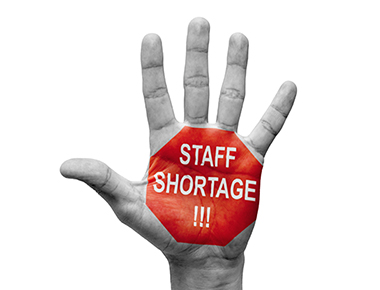

 A new report from Trust for London, an organisation committed to tackling poverty and equality in the capital, has revealed some stark new insights about London’s poverty profile. Whilst the overall poverty figure has nudged down from 29% to 27% over the last six years, the report shockingly reveals that more than half of the 2.3 million Londoners who are living in poverty are in working families.
A new report from Trust for London, an organisation committed to tackling poverty and equality in the capital, has revealed some stark new insights about London’s poverty profile. Whilst the overall poverty figure has nudged down from 29% to 27% over the last six years, the report shockingly reveals that more than half of the 2.3 million Londoners who are living in poverty are in working families.
What’s more, this proportion is the highest it’s ever been. 20 years ago, only 28% of Londoners in poverty were living in a working family; 10 years ago, it was 44%. So today’s figure of 58% is a record that no one wants to celebrate: for too many Londoners, working doesn’t always pay – or pay enough.
Clearly, there are many factors contributing to the problem; the high cost of housing in the capital, the prevalence of low pay, underemployment and insecure work all play their part. And while housing is not something we’re qualified to tackle, we’re confident that can we can offer support with one key part of the solution: flexible working.
As our own research has shown, the supply of quality flexible jobs is lower in London than in the rest of the UK (only 8% of London jobs paying over £20k are advertised as being flexible). This means many of the people who need to work flexibly end up trapped in low paid roles beneath their skill set, because the next flexible step up the ladder doesn’t exist. And for others, the lack of flexible or part time roles mean they aren’t able to work at all, which has a clear impact on household incomes.
The good news is, this is a problem that we know how to fix. By designing jobs at all levels with flexibility built in, and being prepared to advertise them as flexible or part time at the point of hire, employers can improve career progression options for people who need to work in this way. This will not only allow employees to increase their earning power, but also opens up opportunities for others to fill their shoes and so enter the flexible jobs market.
We’re already tacking this on the ground, in partnership with a variety of organisations. For example, we’re working with Trust for London to support low-paid parents through their StepUp London project. We’re running a place-based project funded by the Joseph Rowntree Foundation, and an initiative to support residents of social housing provider L&Q. And our Timewise Councils accreditation programme is helping a number of London local authorities unlock their local labour markets to flexibility.
We’re also working with a range of employers to try and make the flexible and part time roles that currently exist more secure and more predictable – such as, working with social care providers to pilot team based rostering. And we’re aiming to improve career progression for flexible and part time workers, by helping businesses design flexibility into roles higher up the scale.
But if we’re really to tackle the issue of in-work poverty across our capital, all London employers need to do their bit. We’ve got an expert team in place with huge experience in creating and developing flexible working strategies to support low income families; please get in touch to find out more.
To find out more about our consultancy and training services, or to discuss the possibility of becoming a Timewise Council, please contact us via info@timewisefoundation.org.uk
Published October 2017
 The retail industry is without doubt one of the biggest departments in UK PLC. With around three million people working across retail and wholesale, it’s the largest private sector employer in the country. And right now, it’s also on the front line of the looming skills shortages that are likely to create challenges for all sectors.
The retail industry is without doubt one of the biggest departments in UK PLC. With around three million people working across retail and wholesale, it’s the largest private sector employer in the country. And right now, it’s also on the front line of the looming skills shortages that are likely to create challenges for all sectors.
So we’re absolutely delighted to have launched a formal partnership with the British Retail Consortium, which will allow us to help retailers find and keep the best available talent, while delivering career progression for flexible workers.
Flexibility in working hours is one of the most important reasons that people give for choosing to work in retail. But the problem is, this flexibility is often confined to sales assistants and support staff; when it comes to store management, flexible options are thin on the ground.
As a result, employees can become trapped by their need for flexibility, unable to progress their careers or develop their skills because the next step on the ladder is missing. And that has a social impact, limiting earning opportunities for low-income workers, as well as a commercial one.
We began tackling this issue early in 2016, working with the BRC to develop a pilot scheme with Pets at Home which investigated the options for redesigning store manager roles on a part-time and job sharing basis. And right now, we’re part-way through our Retail Pioneer Programme, again with the BRC’s support. The programme is helping five major retailers investigate how flexible working could deliver radical sustainable change for them and their employees.
And that’s just our starter for 10; by formalising this strong working partnership, we’re confident that we can take our passion for flexible opportunities to another level. Together, we are ideally placed to help retailers develop practical, flexible working solutions that will allow them to meet their 2020 goals, particularly with regard to gender equality, employee engagement and career progression.
The challenges ahead of the retail industry can’t be avoided; but well-designed, flexible management roles will go a long way towards unblocking career progression, and make the industry more appealing to workers of all ages. This partnership, and the potential for change that it offers, is the start of a new era for retail employers and employees alike.
To find out more about our consultancy and training services, please email info@timewise.co.uk
Published October 2017
 By Karen Mattison, Co-Founder
By Karen Mattison, Co-Founder
Having spent more than 10 years in the flexible sphere, I’m aware of the perception that it’s mainly women, and particularly mums, who want and need to work flexibly. But I’ve long been convinced that focusing on flexible working as a female issue isn’t necessarily serving women well.
So, knowing that the best way to encourage employers to open up a wider range of roles to flexibility would be to prove the demand, I commissioned an in-depth piece of research focusing on who wants to work flexibly and why in 2017. And the results were more clear-cut than even I was expecting.
Our research revealed that a staggering 87% of the UK’s full-time workforce either work flexibly already or wish they could. The numbers are similar for men (84%) and women (91%), and they cut across the generations, with 92% of Generation Y, 88% of Generation X and even 72% of the baby boomers preferring this way of working.
For people who aren’t currently working, the numbers are equally high; 93% want to find a job that allows them to work part-time or flexibly in some way.
And the reasons vary too; it’s certainly not just about childcare. The most common one mentioned was to have more control over work/life balance (57%), followed by finding it generally useful or convenient (50%) and cutting down on commuting time (30%).
So there’s no room for doubt here: in 2017, flexible working isn’t just for mums. But the problem is that, despite this huge demand, only 1 in 10 jobs are currently advertised as being flexible at the point of hire. As a result, the 84% of male and 91% of female full-timers cited above have few flexible options if they want to move jobs.
The onus, then, has to be on employers to start thinking more broadly about who might want to work flexibly, and to change their hiring and job design practices accordingly. That means, for example, thinking creatively about how to design jobs to make them work on a flexible basis, and making sure that the technology is in place to support it.
We’re hoping that the research will lead to a shift in the way employers approach flexible working, and we’re keen to help make it happen. Our expert team offer training and consultancy services that are second to none; let’s work together to crack this issue and provide truly flexible roles for all.
To find out more about our consultancy and training services, contact info@timewise.co.uk
Published October 2017
 Since its launch in 2015, Timewise’s annual UK Flexible Jobs Index has played an important part in the flexible working conversation. It’s allowed us to track the (slow) growth of the flexible jobs market, and given politicians, business leaders, campaigners and employers the facts, figures and insights they need to open up the workplace to flexibility and make it fairer for all.
Since its launch in 2015, Timewise’s annual UK Flexible Jobs Index has played an important part in the flexible working conversation. It’s allowed us to track the (slow) growth of the flexible jobs market, and given politicians, business leaders, campaigners and employers the facts, figures and insights they need to open up the workplace to flexibility and make it fairer for all.
So we were delighted when the Scottish Government and Family Friendly Working Scotland asked us to create a bespoke index for Scotland, to shine a light on the current state of the flexible hiring market in the country. As with its UK equivalent, the inaugural Timewise Scottish Flexible Jobs Index shows that we have a long way to go if we’re to match the number and type of flexibly advertised jobs with the people who need them.
The research found that only 11.9% of jobs paying more than £20k full time equivalent (FTE) are advertised as offering flexibility at the point of hire – that’s just over one in eight. And the further you go up the salary ladder, the worse the ratio gets; for roles paying between £35k and £59k FTE, it drops to less than one in 10 (8.9%).
Yet the demand is certainly there; more than a third (34%) of unemployed people in Scotland are looking for part time or flexible vacancies, and those who currently work flexibly are also likely to be seeking similar opportunities when moving jobs. And that’s not including those who may have dropped out of the workforce altogether because the flexible jobs they needed weren’t there.
For people who want or need to work flexibly in Scotland, then, there’s a disproportionally small pool of jobs to apply for, particularly at a higher level. This can force people to trade down for flexibility, or get stuck in flexible jobs beneath their skill and ability levels, which not only blocks their own progression but can also limit mobility for less qualified people coming up behind them. And it can prevent some people from working at all, which can have a devastating effect, particularly on low-income households.
Of course, flexibility isn’t just about keeping employees happy (although obviously, it helps). As the demand for flexibility continues to increase, employers who have flexibility as part of their offer will be best-placed to attract and retain the best talent. It’s also been shown to improve employees’ productivity, motivation and engagement, not to mention helping address diversity and the gender pay gap.
So now the facts and figures are out in the open, and the benefits are clear, what should Scottish employers do to get behind flexible hiring? The answer is to think differently about the way flexible jobs are designed. Instead of assuming flexibility can’t work for certain roles, employers need to look at how, when and where a job needs to be done and create jobs that have flexibility built in. That means thinking innovatively, designing jobs that suit the way we live and work now, and being prepared to shout about it at the point of hire.
If Scottish employers get behind this, and start hiring on a truly flexible basis, there’s a real opportunity to create a strong, inclusive and lasting flexible jobs market, for the benefit of everyone. The Scottish Government has already committed to leading by example by becoming a more flexible recruiter, and we are delighted to be working with them achieve this; if you would like us to help you in a similar way, please do get in touch.
To find out more about our consultancy and training services, email info@timewise.co.uk
Published September 2017
 By Emma Stewart, Co-Founder
By Emma Stewart, Co-Founder
Like many of the contributors to the Taylor Review, I shared my views on the day the report was published. The core of my response was that making permanent jobs more flexible – rather than just improving conditions for those who currently work flexibly – is critical to unlocking quality jobs for individuals for whom full time isn’t an option.
And whilst there’s broad agreement that this is a sensible approach which could help move the Taylor Review recommendations forward, there’s a much less widespread understanding of how flexible job design can be used in practice and what’s required to make it a success.
The theory behind job design sounds straightforward: it’s about looking at the current parameters of a role and designing it afresh to fulfil a specific need. In the case of Timewise, that need is to build in flexibility that delivers the right work-life balance for an employee, whether through part-time roles, job shares, variable start and finish times or other flexible options.
However, in too many cases, employers simply look at the hours or patterns that an individual is working, and focus all their attention on how they can continue to deliver as before, but in fewer hours or from a different location. In doing so, they’re setting the individual up to fail, and potentially creating resentment amongst other employees who end up having to pick up the slack.
In practice, then, so-called flexible jobs are often not designed flexibly but have flexibility thrust upon them, without proper thought and with limited success. Clearly, that’s not right – but what should employers do instead? While specific solutions will be different for each sector or organisation, there are some core areas that always need to be addressed within proper job design:
In our consultancy work, we explore these core areas and other related issues, using detailed research and analysis, to provide innovative solutions which fit with our clients’ needs and objectives. The outcome we are aiming for is what we call compatible flexibility; a way of working which is equally beneficial for employers and employees alike, and so delivers affordable, lasting change.
Our recent pilot scheme in the social care sector demonstrates this perfectly. Through close consultation with policy makers, social care providers and front-line carers, we were able to develop a mutually beneficial solution: a geographical, team-based approach to scheduling which reduced travel time, allowed carers to have input into their rotas and improved the overall quality of care.
And right now, we’re working with five national retailers to investigate how job design could help them deliver career progression to senior level for flexible workers; critical for a sector in which the majority of the workforce is part time. Among the routes we are exploring are training managers in how to define and describe jobs based on outputs not inputs, and tackling decision makers about nurturing a mindset in which flexibility is approached as an opportunity, not a threat.
In addition to specific projects such as these, we are also getting ready to take job design to the next level through the creation of the Timewise Innovation Unit. This specialist ‘think tank do tank’ will bring together and share the best thinking, innovative practice and learning on how to redesign work, in order to develop cross-cutting business-led solutions to reimagine the modern workplace. It will be run using a social consultancy model and developed in collaboration with a number of strategic partners; do get in touch if you’re interested in getting involved.
In the meantime, the Taylor Review has underlined the fact that flexible working is here to stay, one way or another. The challenge for employers is to ensure that the way it works in your organisation benefits your business and your employees alike – and clever, creative job design has to be part of that process.
To find out more about our consultancy and training services, call 020 7633 4444 or email info@timewise.co.uk
Published August 2017
 By Karen Mattison, Co-Founder
By Karen Mattison, Co-Founder
It’s nearly two weeks on from the BBC’s landmark reveal of their highest earners’ salaries, and the furore shows no sign of lessening.
Here at Timewise, we’ve been watching the issue unfold with great interest; and one of the things we have noticed is that there seems to be some confusion in the language. Specifically, commentators are repeatedly referring to the BBC’s issue as being about the gender pay gap when in fact, it’s actually about equal pay for the same job.
“Who cares?” you may be asking. “Isn’t it enough that everyone’s talking about women’s pay at last?” Well, no. If you’re looking to fix a problem, you need to be clear about what the problem is. So here’s the difference.
The issue at the BBC is that men and women who are doing what appears to be the same job are not being paid equally. For example John Humphreys, who presents the Today programme on BBC Radio 4, is paid between £600,000 and £649,999, whereas his co-presenter Mishal Husain earns between £200,000 and £250,000. It can never be a perfect comparison, as both individuals do other work for the BBC, but it’s not difficult to argue that the figures indicate an overall difference between what men and women are paid for the same or similar work.
By contrast, the gender pay gap is about the average pay of men and women within an organisation. In simple terms, that means adding up all the men’s pay and dividing it by the number of men, then adding up all the women’s pay and dividing it by the number of women, and then calculating the gap between the two. Whilst the BBC is likely to be struggling on both fronts, it’s this gap, the real gender pay gap, which organisations of over 250 employees are being asked by the GEO to report on by April 2018.
And the reason it matters is because the two issues need tackling differently. I don’t have space to explore the reasons behind the equal pay problem here, and much of it falls outside Timewise’s remit (though we’re happy to go on record and say that we don’t think it’s the women’s fault for not asking enough.) It’s going to require a root-and-branch rethink at senior level, not just at the BBC but throughout the commercial media sector.
But when it comes to the gender pay gap, we do have the answer. As I wrote in a recent article on the topic, the introduction of flexible working can make a real difference to an organisation’s ability to close the gap. In particular, there is a direct correlation between the thinning out of opportunities to work part time or flexibly up the talent pipeline, and the thinning out of women in more senior roles. This has a huge impact on the gap between average male and female salaries, so making flexibility available at a senior level is critical.
And the Women and Equalities Committee agree, saying in a 2016 report: “A large part of the gender pay gap is down to women’s concentration in part-time work which doesn’t make use of their skill… Old fashioned approaches to flexibility in the workplace… are stopping employers from making the most of women’s talent and experience.”
For organisations wishing to close their gender pay gap, then, addressing flexibility is a good place to start. Amongst other things, that means creating a supportive culture, designing jobs to be intrinsically flexible and ensuring that there are flexible routes for career progression. And it means being willing to advertise jobs as being open to flexibility at the point of hire, as championed by our Hire Me My Way campaign.
So while we can’t help Tony Hall out with his news-dominating equal pay problem, we’d be happy to help him and other leaders across the UK tackle their gender pay gap. We’ve got years of experience of delivering innovative solutions through a range of consultancy and training programmes; let’s get to work and close the gap, together.
Published August 2017
 From how we fund social care to the growing pressure on the NHS, the implications of our ageing population is a hot, and often contentious, topic. And recently, the World Economic Forum has raised another issue, warning that the retirement age in Britain will need to rise to 70 by the middle of the century to head off a pension crisis.
From how we fund social care to the growing pressure on the NHS, the implications of our ageing population is a hot, and often contentious, topic. And recently, the World Economic Forum has raised another issue, warning that the retirement age in Britain will need to rise to 70 by the middle of the century to head off a pension crisis.
So it’s not surprising that the government’s business champion is calling on organisations to commit to employing more people over the age of 50 – with the aim of having an additional million older staff in the workplace by 2022. And the staff want it too; according to the government’s Fuller Working Lives report, there are currently almost a million 50- to 64-year-olds who are not in employment at all, but say they are willing or would like to work.
So if it’s good for employers, and popular with employees, why isn’t it happening – and what needs to change? Well, as a recent Guardian article pointed out, the drive to keep people working for longer presents a real opportunity to design roles that suit an older workforce – with flexibility at its core. Here at Timewise, we couldn’t agree more.
Older workers have a valuable role to play within any organisation. They will have banked a huge amount of experience which no amount of training can buy. They make excellent mentors for younger team members, able to offer guidance and encouragement as well as sharing their insights into how to get on and get ahead. And they are likely to know their industry, and the people within it, inside out.
So if we want to keep hold of them for longer, as the Guardian article says: “We simply need to think more creatively about what work is, how it can change and how we can change over a longer lifetime… That could mean working at a different pace at different stages, for example.”
Certainly, it’s not a huge leap to suggest that older workers might be looking to reduce their hours, or work remotely, to make staying in the workplace more appealing. And if that means redesigning their jobs to make them work on a flexible basis, we’d argue that it’s well worth it.
That’s why we’re delighted to be working with the Centre for Ageing Better to carry out employer focused research that will help us all understand how to make workplaces more age-friendly. We’ll be exploring the barriers as well as the possible solutions for designing roles with flexible working options that will help attract and retain our older workforce. We’ll keep you posted about how the project is developing.
In the meantime, the onus is on employers to start thinking flexibly about the path towards retirement. Don’t write off the upper end of your workforce, or lose the experience that they have spent so many years acquiring. Instead, look at how you could flex their roles and responsibilities, so you can make the most of their talents whilst accommodating their changing needs.
By doing so, you’ll hang on to some of the most experienced people in your industry and keep their skills in house. What organisation wouldn’t want that?
To find out more about our consultancy and training services, call 020 7633 4444 or email info@timewise.co.uk
Published July 2017

For those of us who are concerned with improving the quality of work, the publication of the Taylor Review is a landmark moment. It’s a thorough, detailed report that highlights the issues raised by a changing labour market, such as the evolving gig economy, and makes a series of recommendations around improving the rights and conditions of people who want to work outside the traditional 9-5.
Central to the report is the principle that: “All work in the UK should be fair and decent, with realistic scope for development and fulfilment” and that this relies on the provision of quality work. Here at Timewise, we couldn’t agree more. And we believe that making permanent jobs more flexible through proper job design – rather than just improving conditions for those who currently work flexibly – is critical to unlocking quality jobs for individuals for whom full time isn’t an option.
As the report notes, there are around 900,000 workers on zero hours contracts and 1.3 million workers in the gig economy, who have a degree of flexibility but are lacking basic employment rights. But there are also millions of people in the UK for whom it’s flexibility that is missing. From the 11 million working parents (including the 50% of millennial dads who would take a pay cut to spend more time with their children) to the 3 million working carers, it’s clear that the demand for flexible work far outstrips the supply.
Unfortunately, however, flexible working is still perceived by many employers to be a perk offered to existing employees rather than being advertised at the point of hire – and in many cases, without proper planning. The result is that, despite real leaps in technology that support flexible working, around half of managers still think flexibility is incompatible with the nature of their work. And of the permanent employees who do work flexibly, most are in low paid sectors, with extremely limited career progression. Not, then, the quality work that the Taylor Review is calling for.
So how can we achieve the secure flexible roles that the workforce so desperately needs? The solution is to design jobs that have flexibility built in. But although there’s been a great deal of debate even before the report was published about what should be done, there is far less practical support and expertise available to help employers who want to become more flexible find out how to do so.
Timewise, however, have been working proactively with employers to make change happen, by creating innovative solutions for ‘compatible flexibility’ that work for the business as well as its employees (described in the report as ‘two-way flexibility’). We are pioneers of what we term ‘social consultancy’. As a result, we’re already working along many of the lines that the Taylor Review has suggested:
“It is still the case that too few jobs are advertised as being available to people who wish to work flexibly.” (p 95)
Our Hire Me My Way campaign is inspiring candidates to join our call for more employers to offer flexibility at the point of hire, and encouraging flexible employers to stand up and be counted.
“Quality work that is flexible and allows for fulfilment and development requires careful thought around the interaction of consumer demand, technology and societal norms.” (p95)
Our job design pilots focus on how to support employers to create compatible flexibility for low wage workers. A recent example is our Caring By Design project, which was highlighted on p94 of the report.
“NICE issued guidance in 2015 on an organisational commitment to make health and wellbeing a core priority for top management in the NHS.” (p97)
One of the key pathways cited by NICE to deliver on this commitment was through job design. We are already working with the NHS on a national pilot to explore how introducing flexibility into job specifications will help make this a reality.
“There should be a greater focus in national and local policy on supporting people not just to enter the labour market but to remain in work and progress to better quality employment.” (p99)
We have already delivered a pilot for DWP trialling new ways to help women trapped in low-paid part time jobs progress into better but still flexible jobs.
“The Low Pay Commission should work with employers to ensure sector specific codes of practice and guidance are developed that support the provision of quality work.” (p108)
We agree that job design needs to be relevant to the operational issues within each industry, and so create bespoke pilot schemes for individual sectors, such as our current Retail Pioneers project in conjunction with the BRC.
So we welcome the focus that the publication of the Taylor Review will bring to the need to offer workers both flexibility and security. But while we’re sure that the debate around how to tackle the gig and zero hours models will no doubt continue, we hope equal attention will be given developing flexibility, quality and progression in permanent jobs.
We’re proud of the steps we’re already taking to make that happen – but we also believe there are great strides still to be made if the supply of quality flexible work is ever to match the growing demand. That’s why we’re developing an Innovation Unit, which will work with businesses to design, test and share new approaches to increasing the availability of quality flexible work in the UK. It promises to be a gamechanger for the employers who work alongside us – we hope you’ll be part of it.
For an initial conversation about how your industry could benefit from our expertise, call Emma Stewart on 020 7633 4559.
Published July 2017

Businesses have been warning about an impending skills shortage for some time now; and the evidence suggests that it’s really starting to bite. According to a new survey of 400 firms by the Open University, many UK employers have had to pay well above market rate to attract employees over the past year. And the university suggests that the annual cost of this to business could be as much as £2bn.
But for all of us at Timewise, this approach shows a startling lack of originality. Of course, potential employees are unlikely to refuse a higher salary; but by the same logic, a further cash incentive could easily persuade them to move on elsewhere. Whereas if you really want to attract a loyal, motivated and productive employee, there’s a much better way – offer them flexibility.
Thanks to advances in technology and flex-friendly government legislation, flexible working is becoming more common – and no longer just a way to entice women back from maternity leave. 92% of Millennials identify flexibility as a top priority when job hunting and, at the other end of the workforce, the Centre for Ageing Better argues that it could be a key factor in helping the growing number of over 50s work for longer.
It’s not just about what employees want either; the business case for flexibility is sound, and well-documented. For example, remote working champions tend to have less people in the building at once, allowing them to reduce their office space and so their business overheads. A survey by BT indicated that the productivity of flexible workers increased by 30%. And in a CIPD survey, 73% of employees said that flexible working improves staff motivation – and, critically, 75% said it has a positive effect on retention[1].
In short, then, flexible working makes sense for employers and appeals to employees. Yet, despite the fact that there are around 8.7 million people in the UK who would like to work flexibly, less than 1 in 10 jobs adverts currently offer this up front. So an employer who offered flexibility as part of the package – and even better, could demonstrate a flexible pathway for career progression – would immediately have the edge over one who doesn’t.
Our aim here at Timewise is for the offer of flexibility to become the norm; to be just another part of every job description, like holiday entitlement. We offer consultancy and training to organisations who share our aim, and we’re working at every level to bring about this change.
But in the meantime, for employers, offering flexibility at the point of hire is something that will make you really stand out. It will certainly increase your chances of catching the best talent – and unlike mere money, it’s likely to help you hold on to them too.
To find out more about our consultancy and training services, call 020 7633 4444 or email info@timewise.co.uk
Published July 2017
[1] CIPD 2012: “Flexible Working Provision and Uptake”

It’s fair to say that opinion is divided on the gig economy. The parliamentary work and pensions committee has gone on the record to criticise companies in the gig economy for forcing people into self-employment, and rebuffed their claims to be providing flexibility for workers. And in the recent election campaign, both the Labour and Conservative manifestos pledged to take action on self-employment and workers’ rights. Meanwhile, Uber claims that the majority of their drivers “want to remain their own boss, as that’s the reason why they signed up to us in the first place.”
But a new report highlighted in HR Magazine has suggested that workers in the gig economy are actually desperate for work and would prefer a different form of employment. And unsurprisingly, here at Timewise, we believe that creating truly flexible jobs for permanent employees holds the key to putting this right.
The report, Crowd Work in Europe, by the University of Hertfordshire, the Foundation for European Progressive Studies, and UNI Europa, defined crowd work as paid work organised through an online platform. It found that 93% of those doing crowd work at least weekly are searching for another position, compared with just 39% of those who do not do this kind of work.
What’s more, as one of the report’s co-authors, Professor Ursula Huws, explained, crowd workers are often scrabbling together an income from any jobs they can find, as opposed to pursuing an active career choice. “These people are often desperate for work – to the extent they will do tasks they know to be risky because they need that money,” she told the magazine.
So, if the gig economy is a problem for its workers, what’s the solution? The Taylor review into modern employment practices is due to be published in June 2017 and is widely expected to recommend changes to the rights of workers. This is an important step, but at Timewise, we know that there’s more to it than that.
The growth of the gig economy suggests that flexibility is becoming increasingly important to workers – and our own research tells a similar story. So whilst we support any plans to give self-employed workers better rights, we also believe employers need to look at how jobs are designed, so their permanent employees can access flexibility too. And we provide consultancy and training which will help them do just that.
Organisations that have a proper flexible working strategy are more likely to hang on to their best people, develop their skills and keep them in house. They’re also likely to increase their employee diversity, narrow their gender pay gap, and cut their overheads – without cutting productivity.
So let’s not just settle for making poor flexible jobs, such as gig working, better. Let’s also grasp this huge opportunity to make the millions of existing quality jobs more flexible too. That’s the real win-win for business, for candidates and for the economy.
To find out more about our consultancy and training services, call 020 7633 4444 or email info@timewise.co.uk
Published May 2017